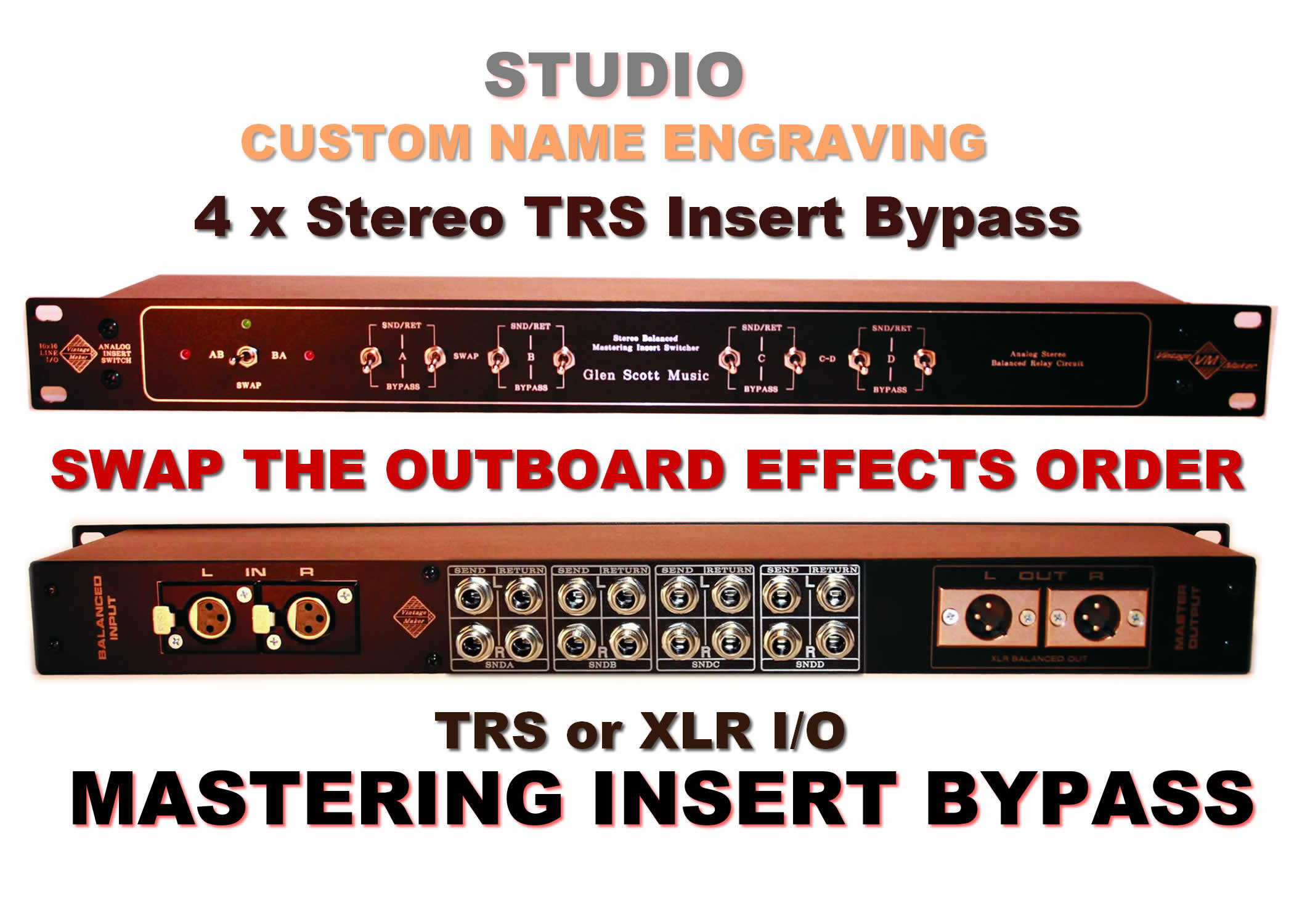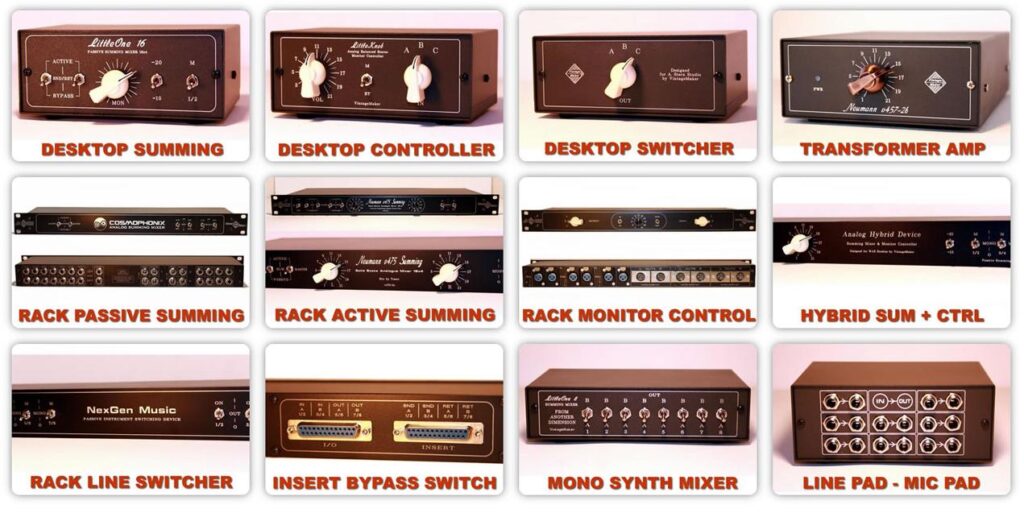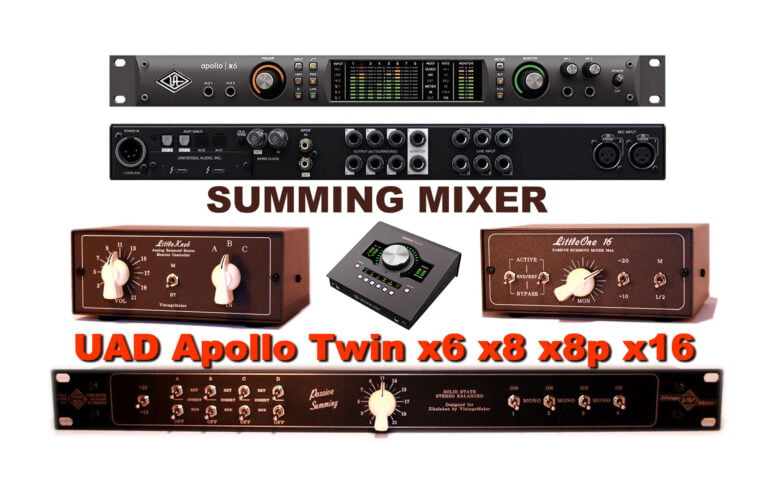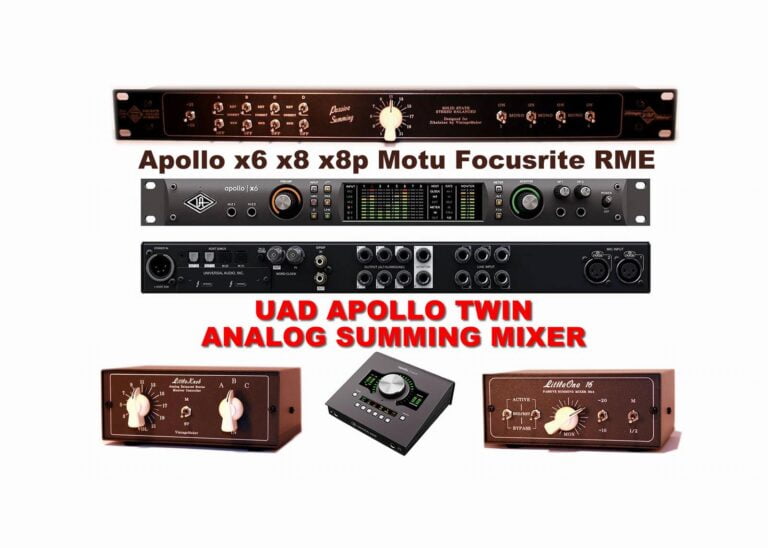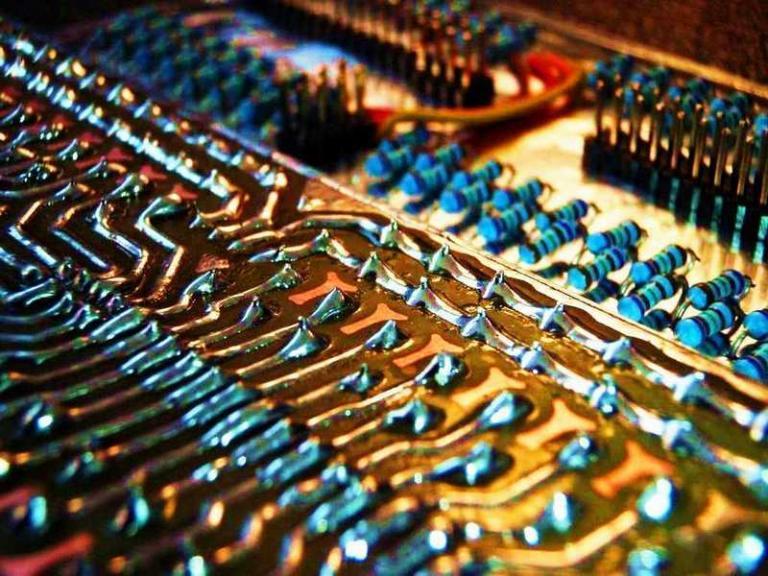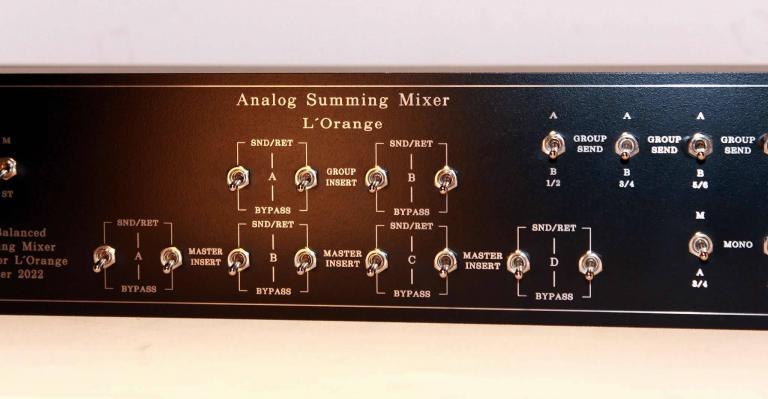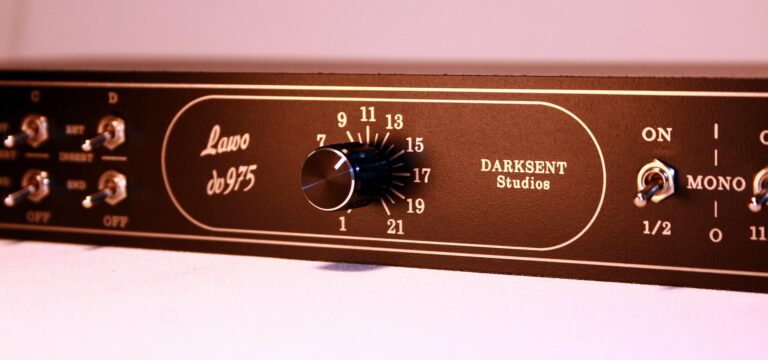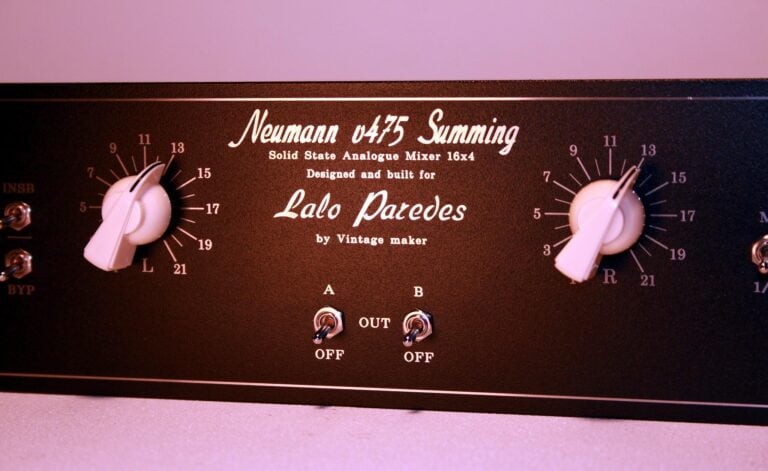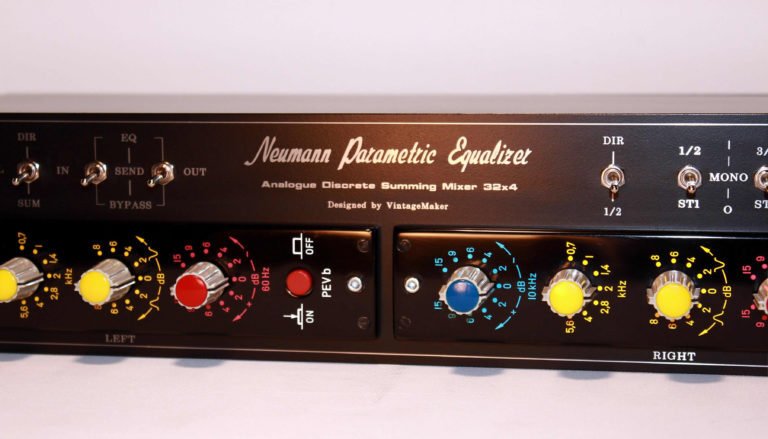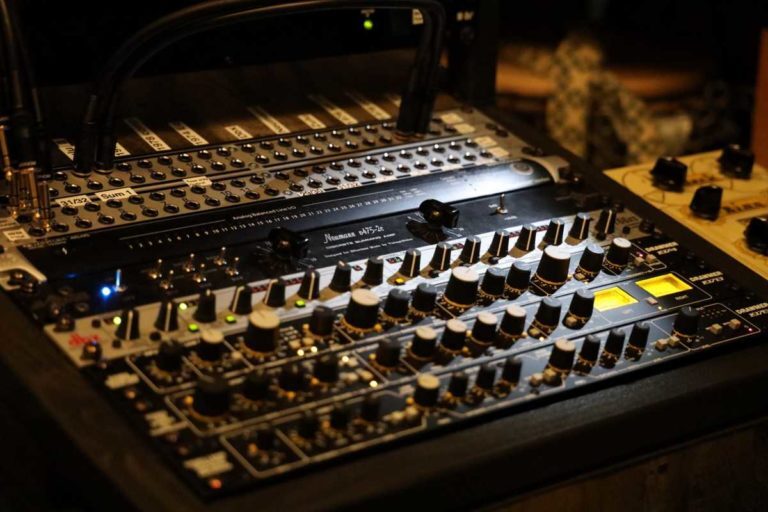
Analog Summing – Channel – Master – Multi Insert
What is the insert in the studio audio mixing processing?
Well, the short annswer is: inserts in the mixer are points of access on the signal path that can be used to take the signal out to an external device such as effects, compressor, limiter, etc. Also insert, found in mixers and digital audio workstations, serves as a connection point positioned after the initial input or preamp of a channel. Its purpose is to facilitate the insertion of a line-level device, which could be a hardware effect unit, processor, or plugin. This device typically consists of both an output, sending the processed signal from the channel, and an input, allowing the signal to return to the channel for further manipulation.
EQ Compressor Limiter on Master Insert
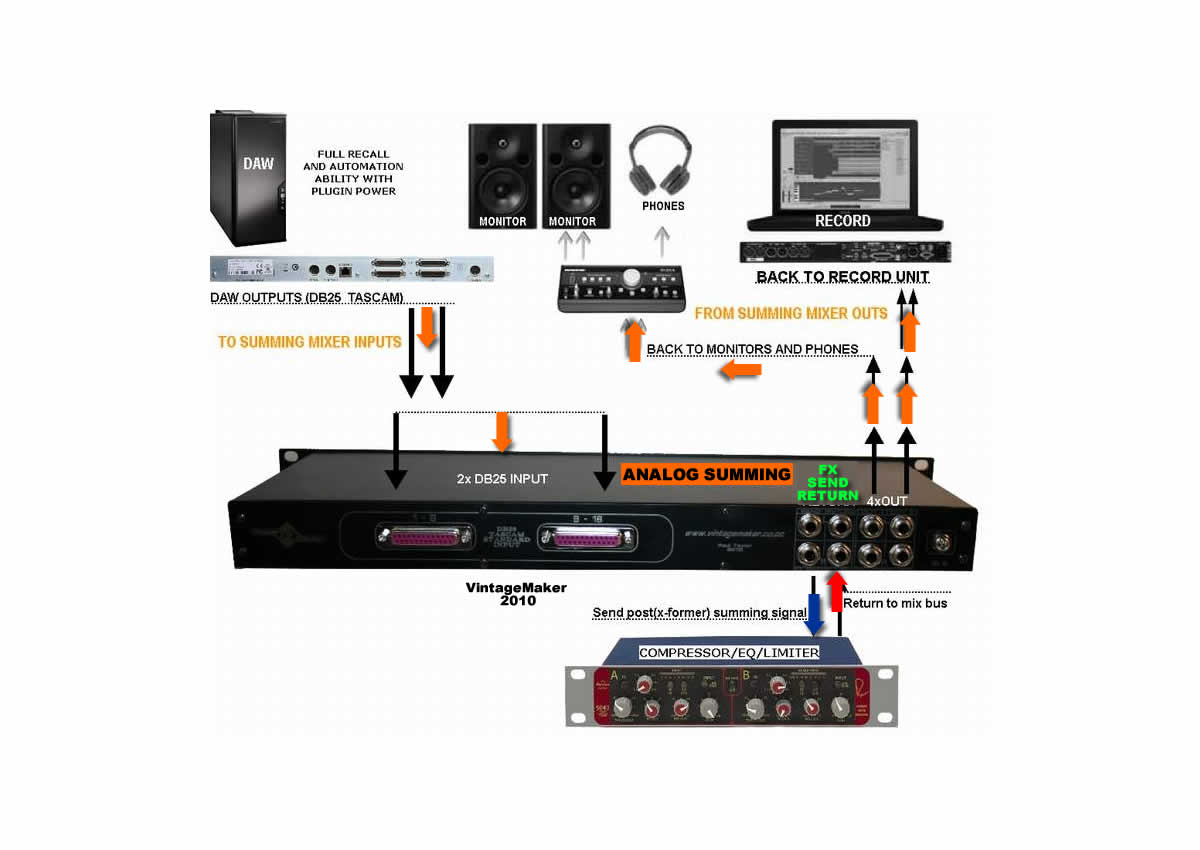
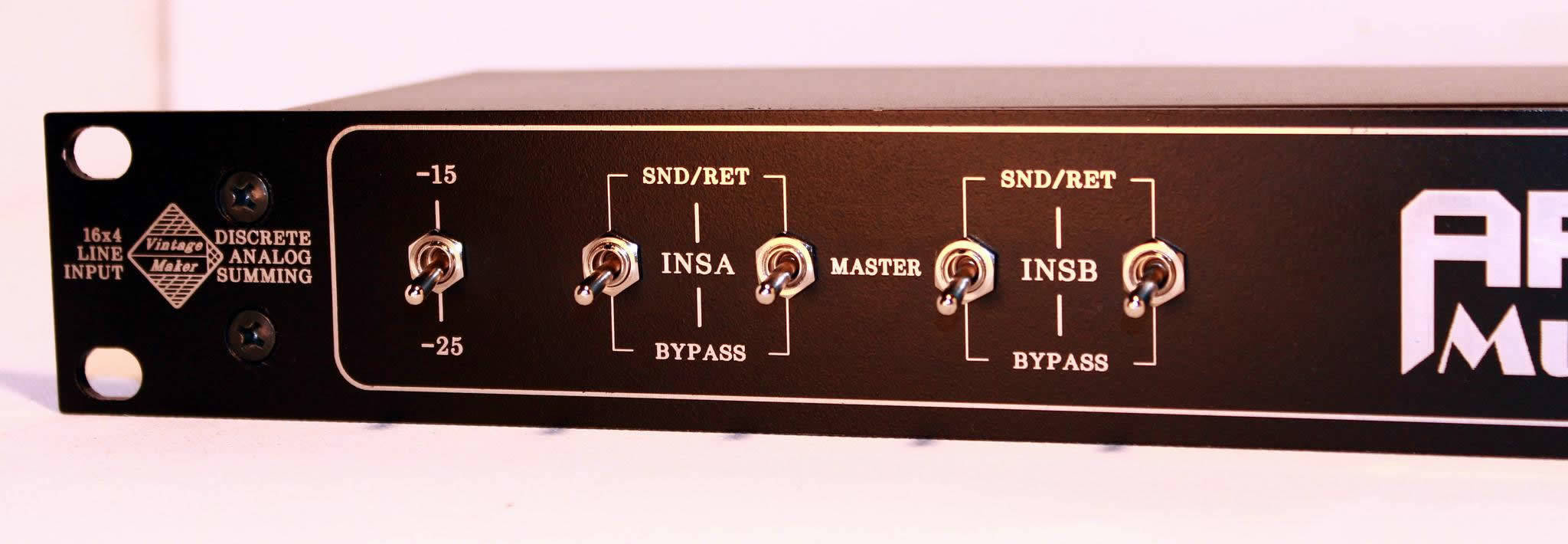
This feature is particularly useful for A/B comparisons between the original signal and the processed signal, allowing to easily switch between the two.

Preamp on Passive Summing Mixer Insert
A preamp on the insert for a passive summing mixer can be beneficial to boost and optimize the incoming signals, ensuring they are at an appropriate level before they are summed. This helps maintain a desirable signal-to-noise ratio and can enhance the overall performance of the passive summing mixer.
Please Note: Your Passive Summing Mixer is Designed for Your Mic Preamp or DAW Mic Pre working range!
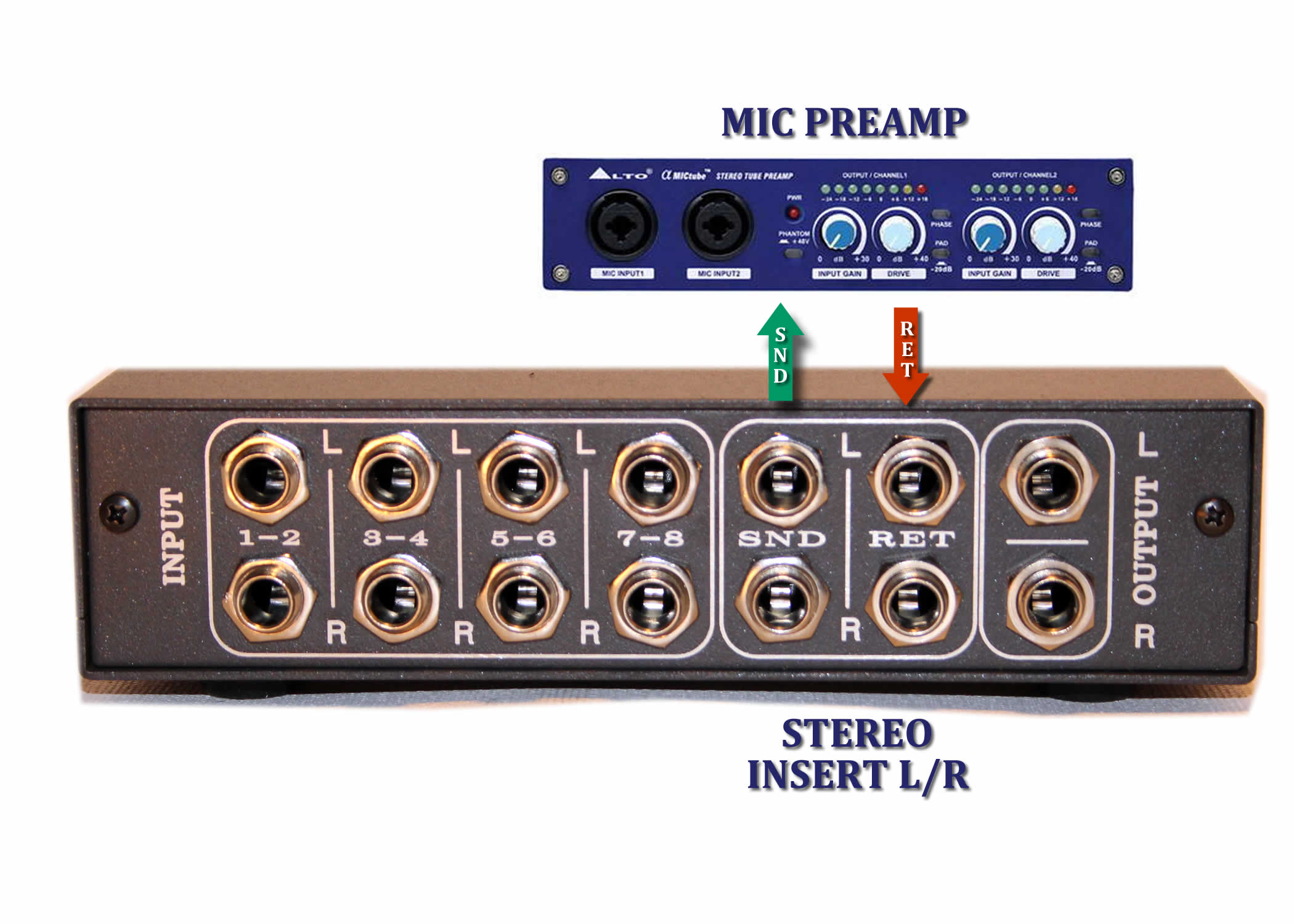
Master Send/Return before the Master Out
the entire signal can be routed to the send, while the return is used to route the processed signal back into the mix. With the first switch, the signal is sent to the external processor, and with the second switch, the processed signal is returned back into the mix. This way, the user can easily toggle between the original and processed signal to make an informed decision about which sounds better.

Multi Master Insert

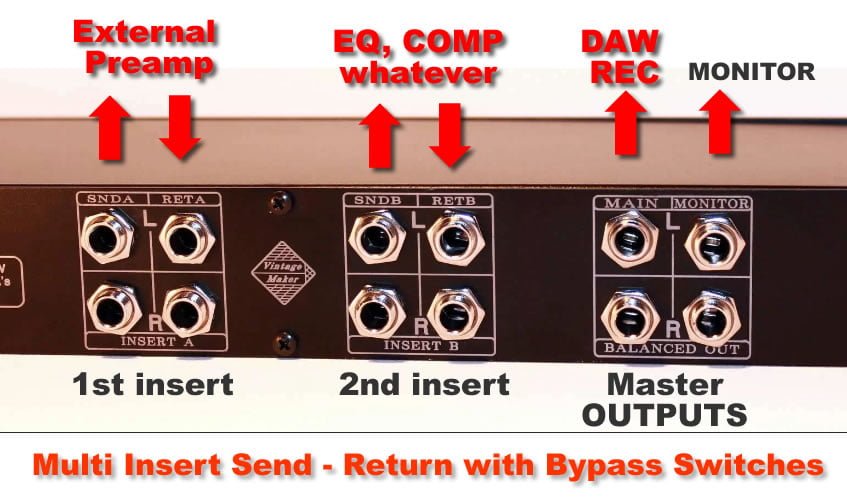
In a Multi-Master Insert Send/Return chain
you have the flexibility to exclude or include any external gear in the chain, either by inserting it into the signal path or bypassing it. This is achieved through multiple send/return options that allow you to select which gear is in use, and which one is bypassed.

For example, you may have multiple pieces of outboard gear that you want to use for different purposes
and you can easily switch between them for different parts of the mix. You can also use the bypass function to quickly compare the processed and unprocessed signals.
Channel Insert:
I find it very useful to insert various outboard gear into different channels before they are mixed together. In addition, aux mixing is essential for me because it enables me to create a “premix” of several channels and send them to a reverb unit. This allows me to mix in different levels of reverb on each channel, while using only one reverb unit in real time.
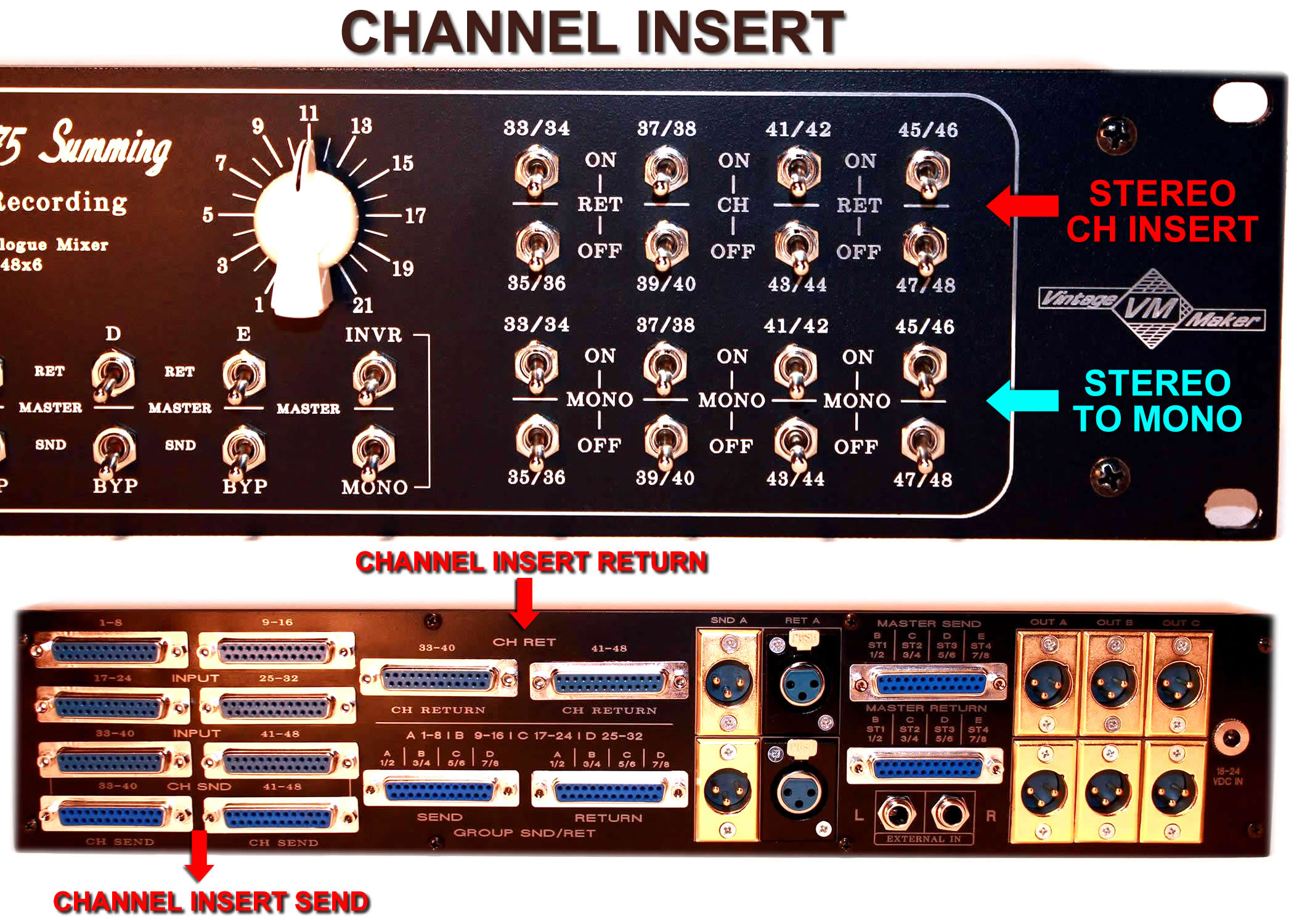
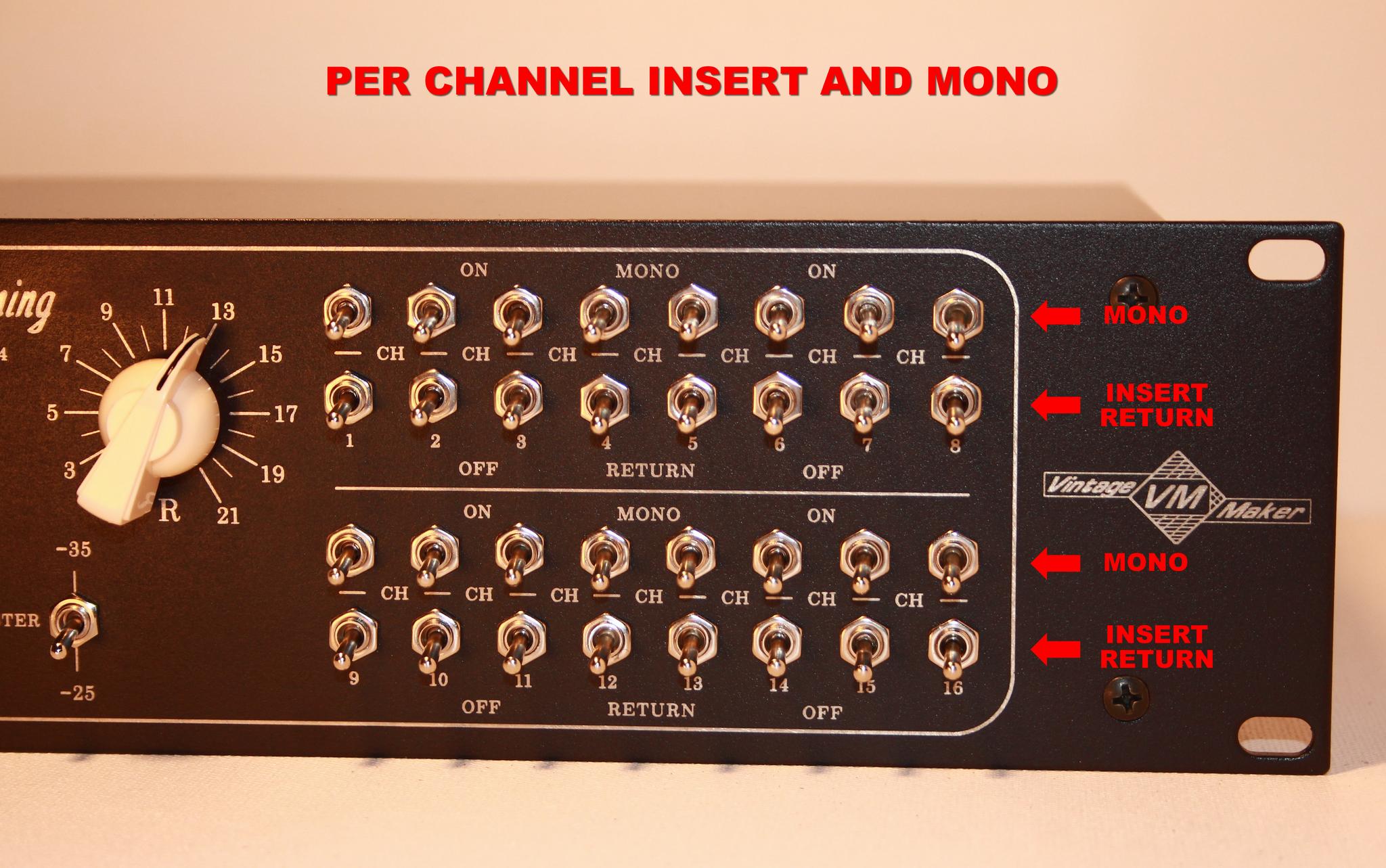

Another advantage of using inserts is the ability to quickly bypass the outboard gear on each channel. This enables me to easily switch between using the outboard gear and not using it, allowing me to compare and contrast the sound with and without the outboard processing.
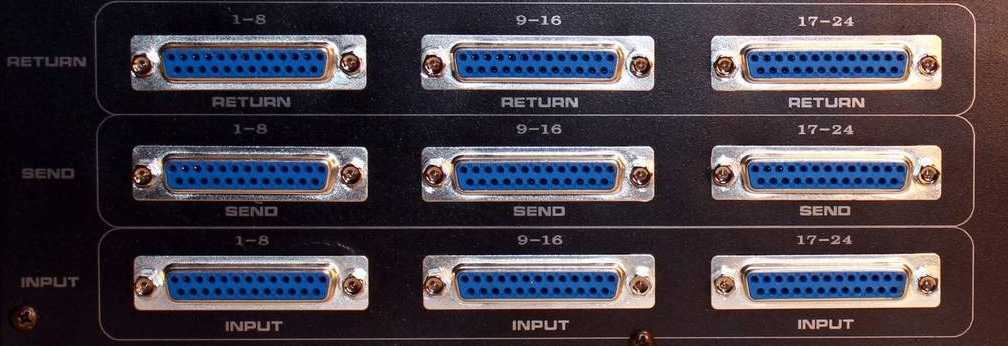
analog summing mixer with inserts for external equalizer compressor limiter preamp

